Fengshi Tian
A 137.5 TOPS/W SRAM Compute-in-Memory Macro with 9-b Memory Cell-Embedded ADCs and Signal Margin Enhancement Techniques for AI Edge Applications
Jul 19, 2023Abstract:In this paper, we propose a high-precision SRAM-based CIM macro that can perform 4x4-bit MAC operations and yield 9-bit signed output. The inherent discharge branches of SRAM cells are utilized to apply time-modulated MAC and 9-bit ADC readout operations on two bit-line capacitors. The same principle is used for both MAC and A-to-D conversion ensuring high linearity and thus supporting large number of analog MAC accumulations. The memory cell-embedded ADC eliminates the use of separate ADCs and enhances energy and area efficiency. Additionally, two signal margin enhancement techniques, namely the MAC-folding and boosted-clipping schemes, are proposed to further improve the CIM computation accuracy.
A Compact Online-Learning Spiking Neuromorphic Biosignal Processor
Sep 26, 2022
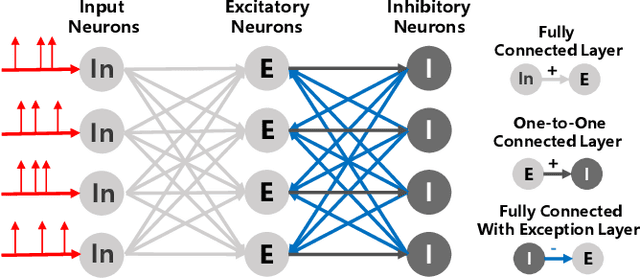
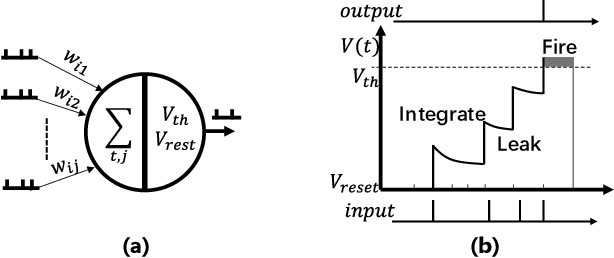
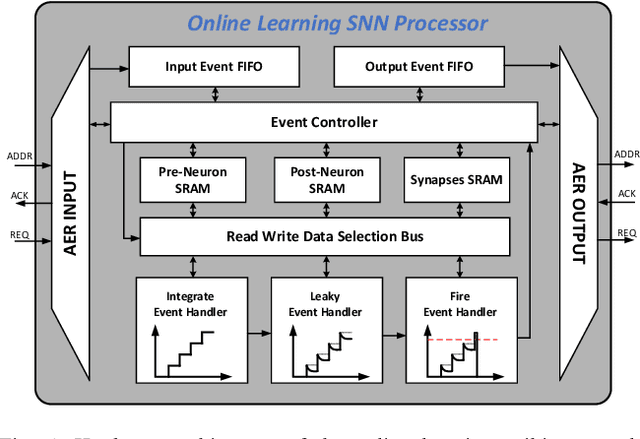
Abstract:Real-time biosignal processing on wearable devices has attracted worldwide attention for its potential in healthcare applications. However, the requirement of low-area, low-power and high adaptability to different patients challenge conventional algorithms and hardware platforms. In this design, a compact online learning neuromorphic hardware architecture with ultra-low power consumption designed explicitly for biosignal processing is proposed. A trace-based Spiking-Timing-Dependent-Plasticity (STDP) lgorithm is applied to realize hardware-friendly online learning of a single-layer excitatory-inhibitory spiking neural network. Several techniques, including event-driven architecture and a fully optimized iterative computation approach, are adopted to minimize the hardware utilization and power consumption for the hardware implementation of online learning. Experiment results show that the proposed design reaches the accuracy of 87.36% and 83% for the Mixed National Institute of Standards and Technology database (MNIST) and ECG classification. The hardware architecture is implemented on a Zynq-7020 FPGA. Implementation results show that the Look-Up Table (LUT) and Flip Flops (FF) utilization reduced by 14.87 and 7.34 times, respectively, and the power consumption reduced by 21.69% compared to state of the art.
An Event-Driven Compressive Neuromorphic System for Cardiac Arrhythmia Detection
May 26, 2022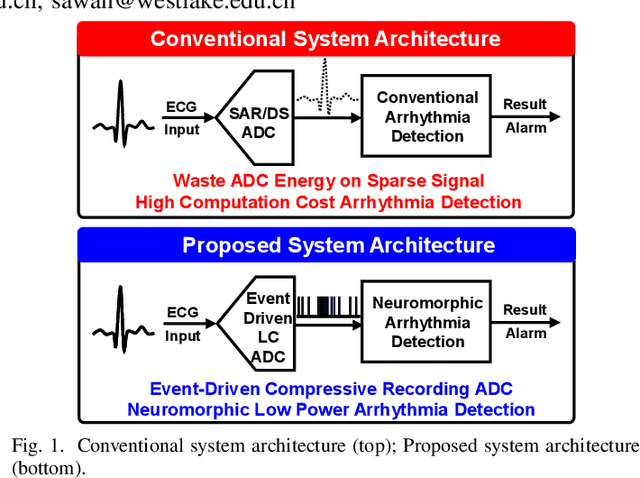
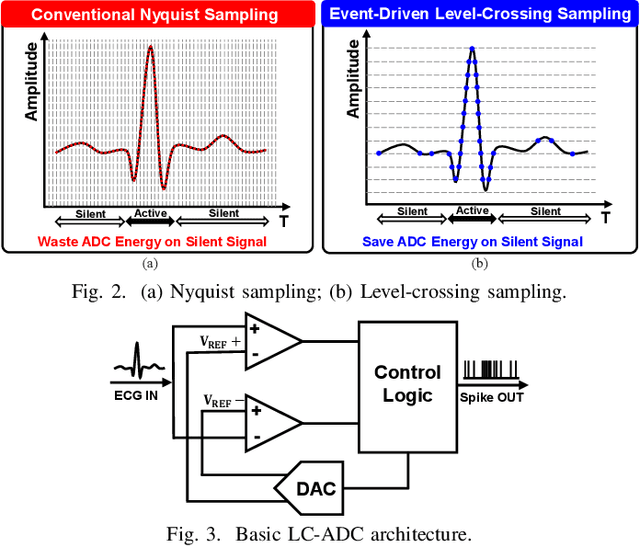

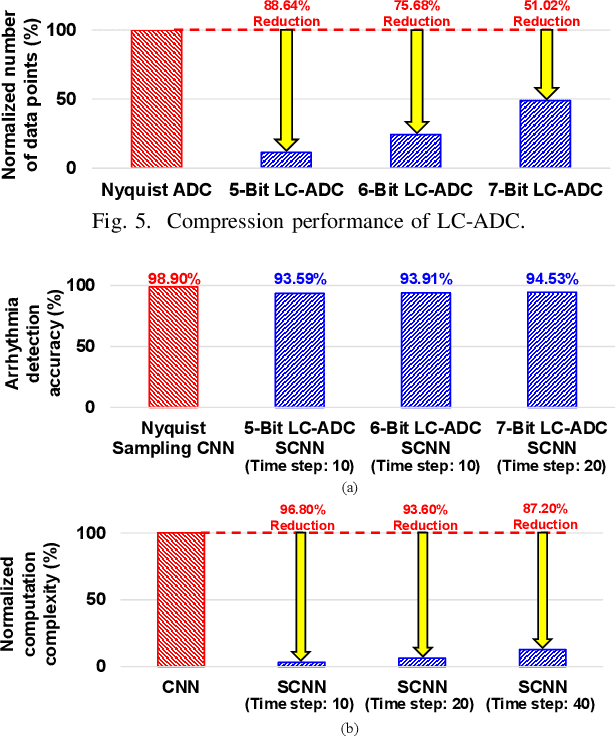
Abstract:Wearable electrocardiograph (ECG) recording and processing systems have been developed to detect cardiac arrhythmia to help prevent heart attacks. Conventional wearable systems, however, suffer from high energy consumption at both circuit and system levels. To overcome the design challenges, this paper proposes an event-driven compressive ECG recording and neuromorphic processing system for cardiac arrhythmia detection. The proposed system achieves low power consumption and high arrhythmia detection accuracy via system level co-design with spike-based information representation. Event-driven level-crossing ADC (LC-ADC) is exploited in the recording system, which utilizes the sparsity of ECG signal to enable compressive recording and save ADC energy during the silent signal period. Meanwhile, the proposed spiking convolutional neural network (SCNN) based neuromorphic arrhythmia detection method is inherently compatible with the spike-based output of LC-ADC, hence realizing accurate detection and low energy consumption at system level. Simulation results show that the proposed system with 5-bit LC-ADC achieves 88.6\% reduction of sampled data points compared with Nyquist sampling in the MIT-BIH dataset, and 93.59\% arrhythmia detection accuracy with SCNN, demonstrating the compression ability of LC-ADC and the effectiveness of system level co-design with SCNN.
A New Neuromorphic Computing Approach for Epileptic Seizure Prediction
Feb 25, 2021



Abstract:Several high specificity and sensitivity seizure prediction methods with convolutional neural networks (CNNs) are reported. However, CNNs are computationally expensive and power hungry. These inconveniences make CNN-based methods hard to be implemented on wearable devices. Motivated by the energy-efficient spiking neural networks (SNNs), a neuromorphic computing approach for seizure prediction is proposed in this work. This approach uses a designed gaussian random discrete encoder to generate spike sequences from the EEG samples and make predictions in a spiking convolutional neural network (Spiking-CNN) which combines the advantages of CNNs and SNNs. The experimental results show that the sensitivity, specificity and AUC can remain 95.1%, 99.2% and 0.912 respectively while the computation complexity is reduced by 98.58% compared to CNN, indicating that the proposed Spiking-CNN is hardware friendly and of high precision.
* Accepted to 2021 IEEE International Symposium on Circuits and Systems (ISCAS)
 Add to Chrome
Add to Chrome Add to Firefox
Add to Firefox Add to Edge
Add to Edge